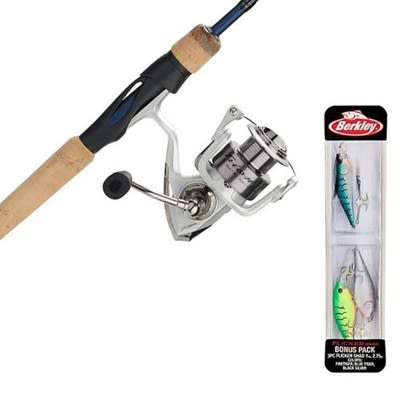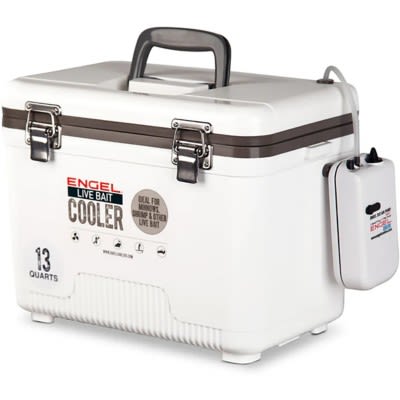Today's Best Fishing Times
Get the best fishing times for Deer Lake with Lake-Link's Fishing Forecast. SEE MORE
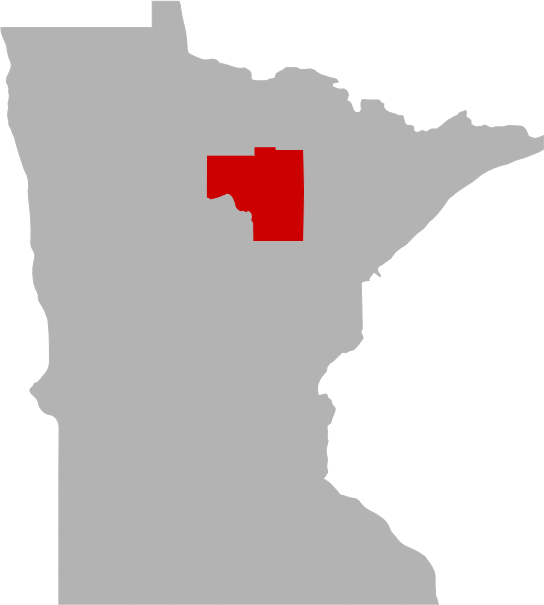
Share your catch!
We want to see what you've caught on Deer Lake.Frequently Asked Questions About Deer Lake, MN
- How big is Deer Lake?
- How deep is Deer Lake?
- What kind of fish can you catch in Deer Lake?
- What are the closest cities to Deer Lake?
- Are there places to stay in the Deer Lake area?
- Are there boat launches on Deer Lake?
- Are there places to eat and drink near Deer Lake?
- What is the average air temp for Deer Lake?
- Are there any state parks near Deer Lake?
How big is Deer Lake?
How deep is Deer Lake?
What kind of fish can you catch in Deer Lake?
Other fish species in the lake include Banded Killifish, Blackchin Shiner, Blacknose Shiner, Bluntnose Minnow, Brassy Minnow, Brook Stickleback, Central Mudminnow, Cisco (Tullibee), Common Shiner, Creek Chub, Hybrid Sunfish, Iowa Darter, Johnny Darter, Lake Whitefish, Least Darter, Logperch, Longnose Dace, Mimic Shiner, Mottled Sculpin, Shorthead Redhorse, Silver Redhorse, Spottail Shiner and White Sucker.
What are the closest cities to Deer Lake?
Are there places to stay in the Deer Lake area?
More Lodging Options
Are there boat launches on Deer Lake?
Are there places to eat and drink near Deer Lake?
Explore the Deer Lake area in a RV
Are you looking for an adventurous vacation option that won't break the bank? Look no further than renting an RV! Contrary to popular belief, the process is much simpler than you might imagine. With just a few easy steps, you'll soon be experiencing the ultimate freedom and convenience of exploring the open road in your very own recreational vehicle. And the best part? RV travel can save you up to 60% compared to other types of vacations! With the money you'll save, you'll be able to travel even more and create unforgettable memories along the way. So why wait? Start planning your next adventure today with an RV rental. Learn more about renting a RV.
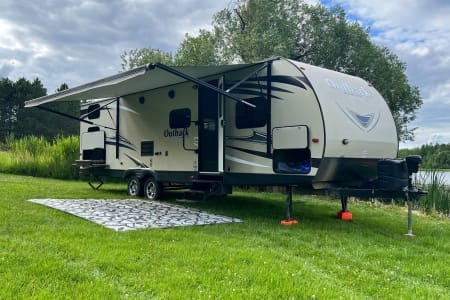
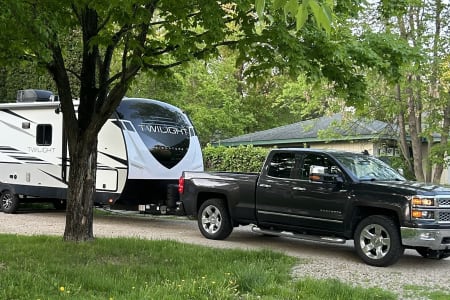
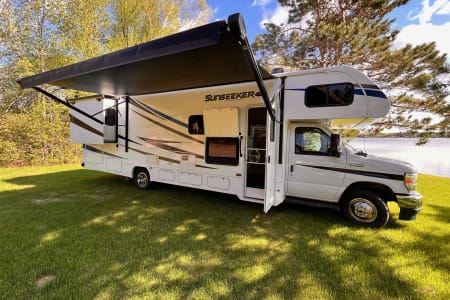
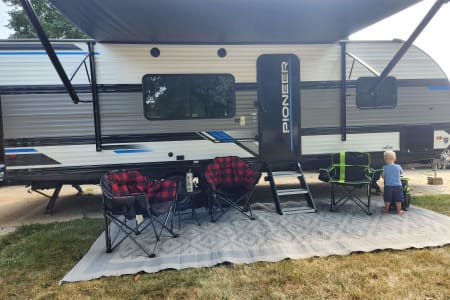
History & Status of the Fishery
Deer Lake is a class 22 lake located northeast of Deer River, Minnesota. There is one public access on the southwest part of the lake. There were 373 homes or cabins counted during the 2005 survey, indicating moderate to high shoreline development. The 2006 lake management plan indicated muskellunge, smallmouth bass and walleye as the primary species of management with northern pike as a secondary species. The 2012 assessment also included sampling of near shore fish species in order to calculate an Index of Biotic Integrity (IBI) score.
Muskellunge are difficult to sample with our standard sampling methods. In the 2012 assessment, only one muskellunge was sampled in the gill nets. The most recent spring muskellunge assessment was conducted in 2003. Spring netting conditions were ideal for sampling muskellunge since the weather was relatively stable and water temperatures progressively increased. Of the 339 muskellunge captured (1.7/net) in the 199 trap nets, 72 were recaptures. The population was estimated at 600 fish or 0.15 fish/acre. The fish ranged from 26 to 50 inches with 79% being 42 inches or less.
Walleye gill-net catch rates have fluctuated considerably since the first assessment in 1948. The lowest catch rate was 2.3 fish/net in 1975 and the highest catch of 13.3 fish/net occurred in 1984. In 2012, the gill-net catch was 12.9 fish/net, which exceeded the 3rd quartile value of 9.6 fish/net. The catch exceeded the aggressive management goal of 11 walleye/gill net. The walleye population appeared to be in good condition based on the size and age structures sampled. Walleye from 7.8 to 27.6 inches were sampled and they had a mean length of 14.1 inches. Ten year-classes were identified by scale, opercle, and otolith analysis. Age-1 through 4 walleye dominated the sample, representing close to 90% of the total. Walleye growth was good with age-4 fish averaging 18.8 inches. Mean back-calculated length-at-ages were similar to statewide averages for all ages.
Largemouth bass were sampled with spring night electrofishing four times from 1995 to 2012. Catch rates had increased substantially from 2.2 fish/hr in 1995 to 45.0 fish/hr in 2005 but declined to 15.5 fish/hr (on-time) in 2012. The sampled fish ranged from 6.7 to 16.1 inches and had a mean length of 11.2 inches. Nine year-classes were sampled from two to 10 years old. No one age-class dominated the sample. Growth was poor compared to the statewide averages. Mean back-calculated lengths were below 15% of the statewide average.
Smallmouth bass were also sampled with spring night electrofishing four times from 1995 to 2012. Catch rates followed a similar trend as for largemouth bass. From 1995 to 2005, the smallmouth bass electrofishing catch increased from 17.3 fish/hr to 55.9 fish/hr but declined to 28.5 fish/hr (on-time) in 2012. Gill nets can often sample smallmouth bass quite effectively depending on the lake. In 2012, 85 fish were sampled for a catch of 5.7/gill net. The gill-net sampled fish ranged from 5.1 to 19.1 inches and had mean length of 14.0 inches. The spring electrofishing sample ranged from 4.6 to 19.5 inches and had a mean length of 12.0 inches. Age and growth information was only collected during the spring electrofishing sample. Ten year-classes were sampled from two to 11 years old with age-2 fish representing nearly 28% of the sample. Growth was slower than statewide averages for all ages.
Northern pike gill-net catch rates have always been below the lake class 1st quartile of 3.0 fish/net. The highest catch rate of 1.1 fish/net occurred in 1948 and 1984. In 2012, the gill-net CPUE was 0.3 fish/net. Low northern pike numbers frequently results in good size structure. Northern pike ranged from 15.4 to 27.2 inches and had a mean length of 20.0 inches. Age and growth information was not collected in this assessment.
The black crappie population has always been low and will likely remain low due to the lack of suitable habitat. Black crappie were only sampled by trap nets once from 1948 to 1990 and were first sampled by gill nets in the 2000 assessment. Black crappie gill-net and trap-net catch rates were both 0.7 fish/net in 2005. In 2012, the gill-net and trap-net catches were 0.7 and 0.1 fish/net. Black crappie ranged from 6.3 to 11.2 inches for the combined gears. Age and growth information was not collected in this assessment.
Bluegills were seldom sampled prior to the 1990 population assessment (0.2 to 2.7 fish/trap net). Bluegill catch rates have increased substantially beginning in 1990 with a catch of 21.0/net. In the four assessments since 1990, the trap-net catch has fluctuated from 10.5 to 32.0/net. The catch was 16.8 fish/net in 2012. Bluegill catch rates have been near or above the lake class median of 15.3 fish/net in the last five assessments. Bluegill lengths ranged from 3.6 to 8.0 inches, with a mean of 6.0 inches. Age and growth information was not collected in this assessment.
Tullibees, due to their pelagic nature, are difficult to sample with our standardized, summer assessments. As a result, tullibee catch rates are generally low but they can be highly variable. In 1948, the gill-net catch rate was 11.2 fish/net but in the next assessment in 1975 none were captured. In 1980, 8.6 tullibee/net were sampled but in the next five assessments the highest catch was 0.3 fish/net. None were sampled in gill nets in 2005 and only four were sampled in 2012. Anecdotal information indicates there is an abundance of tullibee in the lake and the sampling methodology has not accurately reflected the population.
The yellow perch population has been relatively stable remaining between the 1st and 3rd quartile values for all assessments. In 1948, the catch was 11.8 fish/gill net (lowest on record), and catches have gradually increased to 32.2 fish/gill net (highest on record) in 2005. In 2012, the catch declined to 10.7 fish/gill net. Yellow perch lengths ranged from 5.8 to 11.5 inches and had a mean length of 8.1 inches. Age and growth information was not collected in this assessment. Yellow perch are probably more important within the fish community as a prey source than as a species desired by anglers.
Other species observed during the population assessment included bowfin, hybrid sunfish, lake whitefish, pumpkinseed sunfish, rock bass, white sucker. Additional species observed during IBI sampling included banded killifish, blackchin shiner, blacknose dace, bluntnose minnow, brook stickleback, central mudminnow, common shiner, Iowa dater, Johnny darter, least darter, logperch, longnose dace, mottled sculpin, and spottail shiner.
In order to maintain or improve fish and wildlife populations, water quality and habitat must be protected. People often associate water quality problems with large-scale agricultural, forestry, urban development or industrial practices in the watershed. In reality, the impact of land use decisions on one lake lot may be relatively small, yet the cumulative impact of those decisions on many lake lots can result in a significant decline in water quality and habitat. For example, removing shoreline and aquatic vegetation, fertilizing lawns, mowing to the water's edge, installing beach sand blankets, failing septic systems and uncontrolled run-off, all contribute excess nutrients and sediment which degrade water quality and habitat. Understanding these cumulative impacts and taking steps to avoid or minimize them will help to insure our quality fisheries can be enjoyed by future generations.
What is the average air temp for Deer Lake?
Are there any state parks near Deer Lake?
For more Minnesota State Park information see our State Park Guide.
Deer Lake Reviews
Below is the word on street about Deer Lake.Have you been to Deer Lake? Why not share your personal reveiw with others?
Submit Review
troy p.

More Nearby Lakes To Explore
There's more lake's to explore around Deer Lake...| DISTANCE | ACRES | MAX DEPTH | |
| Moose Lake | 1.7 mi | 1,274 | 61 ft |
| Little Moose Lake | 1.7 mi | 289 | 23 ft |
| Clarke Lake | 1.8 mi | 35 | 34 ft |
| Loon Lake | 2.3 mi | 64 | 40 ft |
| Otter Lake | 2.5 mi | 164 | 17 ft |
| McAvity Lake | 2.6 mi | 147 | 29 ft |
| Little Deer Lake | 2.6 mi | 67 | 39 ft |
| Fawn Lake | 2.8 mi | 190 | 37 ft |
| Crane Lake | 2.9 mi | 38 | 80 ft |
| Hansen Lake | 3.1 mi | 66 | 45 ft |


 (1)
(1)


